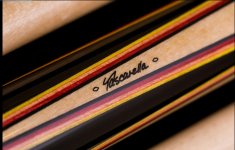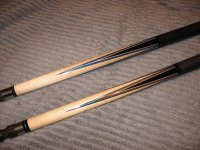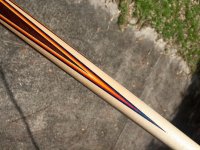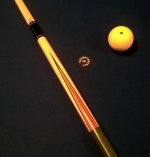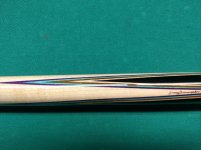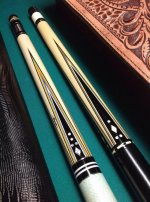from what i've ever read, GB was about the only top recognized cue maker who actually started as a long-time woodworker. HR more or less did, too, since he started with BBC. So GB would naturally gravitate to wood with the best technical characteristics for cues, as opposed to "most interesting looking".
Most people who enter the trade seem to want to make "fancy" cues with exotic woods. Without a long and pretty deep understanding of how wood works and moves, that is rather fraught (almost luck) to also get a good performing cue until a lot of experience builds. So the evolution has been to core the parts. Once the process is stabilized (each makers experience-acquired understanding of what core wood type, grain, proportions, & glue yields stability and the "hit" they want to be known for) can yield relatively predictable results.
From what i see in the wild, it is ever more difficult to buy many exotics in straight grain. So it may become essential to core eventually even for full-splice and those of us who resist the notion.
One good thing - I doubt S-G maple will ever be rare, at lease in the size needed for fore-arms.
smt
Most people who enter the trade seem to want to make "fancy" cues with exotic woods. Without a long and pretty deep understanding of how wood works and moves, that is rather fraught (almost luck) to also get a good performing cue until a lot of experience builds. So the evolution has been to core the parts. Once the process is stabilized (each makers experience-acquired understanding of what core wood type, grain, proportions, & glue yields stability and the "hit" they want to be known for) can yield relatively predictable results.
From what i see in the wild, it is ever more difficult to buy many exotics in straight grain. So it may become essential to core eventually even for full-splice and those of us who resist the notion.
One good thing - I doubt S-G maple will ever be rare, at lease in the size needed for fore-arms.
smt
Last edited:

